The Best time to Golf in Sri Lanka

Golfers seeking a tropical vacation with a demanding round of golf are quickly discovering how popular Sri Lanka is as a destination. It’s no surprise that Sri Lanka is drawing golfers from all over the world with its picturesque scenery, rich green landscapes, and top-notch golf courses. To make the most of your vacation, it’s crucial to know the optimum time to play golf in Sri Lanka because the weather there may be erratic. The best time to play golf in Sri Lanka will be discussed in more detail in this article so you can make travel arrangements and get the most out of the sport.
Best time to golf in Sri Lanka according to region
Golfing in Sri Lanka’s western provinces
When the weather is dry and bright, between December and March is the ideal time to play golf in Colombo and along the west coast. The temperature fluctuates between 27 and 30 degrees Celsius at this time, making it ideal for a day of golf. To play golf comfortably, it is best to avoid the months of April and May as they can be hot and muggy. In addition, from June through October, Sri Lanka experiences the monsoon season, which brings with it high winds and lots of rain. As a result, it is advised to avoid playing golf then because the course can be flooded and unusable. From November to February, golfers who choose to play in Colombo and the west coast may occasionally experience rain showers, although these are often brief and have little impact on the game.

Royal Colombo Golf Club
One of Sri Lanka’s first golf courses, the Royal Colombo Golf Club, opened its doors in 1896. Additionally, it is proud to be home to the second-oldest royal golf club outside of the United Kingdom. This golf course is located in Colombo, the country’s capital, around 40 minutes from the airport. The Sri Lanka Golf Union, Sri Lanka’s national golf regulating organization, is based there and is in charge of keeping ties to the Royal and Ancient Golf Club of St. Andrews in Scotland.
In order to provide every golfer with the best possible experience, Royal Colombo Golf Club has undergone several improvements, including replacing the grass on the fairways and greens, modernizing the irrigation system, redesigning the existing water hazards, and eliminating unsightly trees. In addition to offering a wonderful golfing experience, Royal Colombo Golf Club is the perfect place to get away from the busy city. It includes a clubhouse with a tranquil ambiance where golfers may unwind and savor delectable fare.
Golfing in Sri Lanka’s central provinces
In Kandy, Nuwara Eliya, and the central highlands, the dry season, which lasts from December to March and from June to September, is the best time to golf in Sri Lanka Central. The best months to play golf in these regions are said to be February through April and August through September. The weather is often dryer and colder throughout these months, with typical highs and lows between 18°C and 25°C.
Golfers should anticipate a sunny sky and a cool wind, which will make for a great round of golf. The golf courses are also expected to be in better shape, with well-kept fairways and greens due to the colder temperatures and drier weather.

Victoria Golf & Country Resort
Golf fans may play a game of golf at the Victoria Golf & Country Resort in Kandy, which is tucked away in the Knuckles Mountain Range’s foothills. The course is well-kept and difficult, with strategically placed bunkers and water hazards to challenge even the most seasoned golfers.
For golf enthusiasts in Nuwara Eliya, the Nuwara Eliya Golf Club is a must-visit. The more than 100-year-old course is situated amidst the area’s scenic hills and tea plantations. Golfers may take in the breathtaking views of the surrounding countryside and mist-covered mountains while playing a game of golf.
The Eagles Golf Links, located in the central highlands, is a fantastic choice for those who like a more contemporary course. Due to its difficult design and breathtaking panoramic vistas of the gorgeous valleys and hills, this relatively new course has rapidly become a favorite among players.
Golfing in Sri Lanka’s southern provinces
The best time to golf in Sri Lanka’s southern provinces is from May to September, and the golf courses in Hambantota and Anuradhapura are also in the dry zone. The weather is often bright and clear throughout this period, with very little rain. The best temperature for outdoor sports like golfing is approximately 30°C (86°F) during this time in Hambantota and Anuradhapura. It’s comfortable to spend a lot of time outside thanks to the dry air and low humidity.
It’s crucial to remember that even during the season, the weather in this area may be unpredictable. It is usually a good idea to check the weather forecast before going out to the golf course because there may be sporadic heat waves or brief periods of rain.
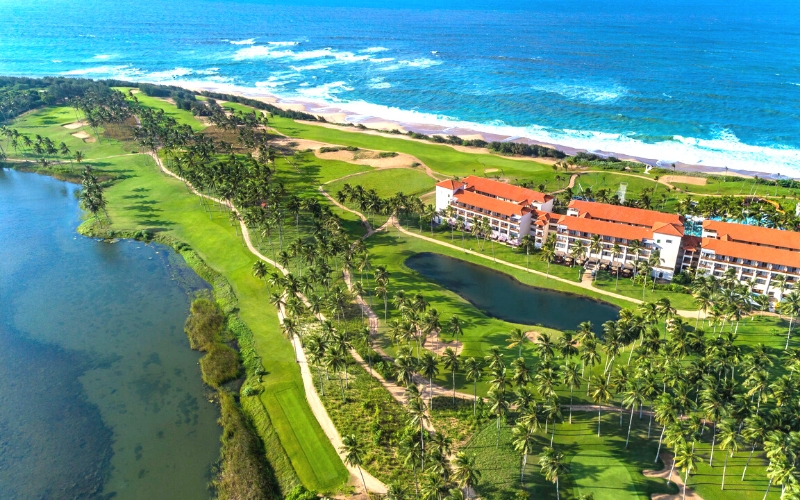
Shangri-La’s Hambantota Golf Club
The Shangri-La’s Hambantota Golf Club, which is located on the resort’s property, opened to visitors in 2016. The 18-hole resort course was created by renowned golf designer Rodney Wright. This club offers golfers of all skill levels the opportunity to tee off thanks to its three tee decks.
The Hambantota Golf Club at Shangri-La provides not only breathtaking vistas but also unique obstacles for players as it sprawls across a coconut palm plantation. This golf course was created with a commitment to biodiversity and habitat preservation by Rodney Wright. It incorporates cultural and natural features into a golf course to improve the game and to calm the eyes and emotions of spectators. The clubhouse’s restaurant, Ulpatha, offers a variety of ice-cold beverages, pub-style fare, and beers on tap. There is also a spa called CHI, where visitors and players may receive Ayurvedic treatments.
High & Low Golfing Season in Sri Lanka
A tropical paradise with a variety of climates, Sri Lanka is the ideal location for year-round golfing. The location of the golf course, the local temperature, and your own tastes will all influence when you should play golf in Sri Lanka.
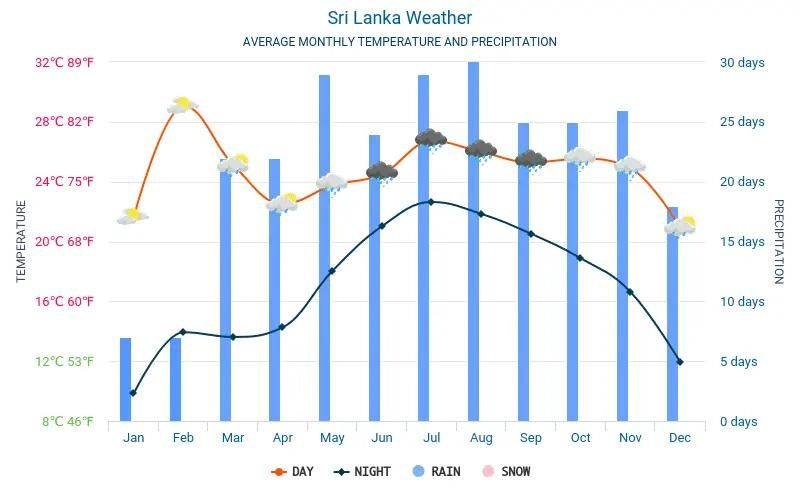
Sri Lanka’s average temperatures
Golf in Sri Lanka during the low season
The southwest and northeast monsoons are Sri Lanka’s two monsoon seasons, which should be noted. While the east coast is affected by the northeast monsoon from October to January, the west and south coasts are affected by the southwest monsoon from May to September. Due to the frequent thunderstorms and severe rainfall during these months, golfing might be difficult.
In Sri Lanka, the months of April through September are often hot, muggy, and occasionally rainy. Depending on the area, the temperature fluctuates from 28 to 32 degrees Celsius. In contrast to the central highlands, coastal regions are often hotter and more humid.
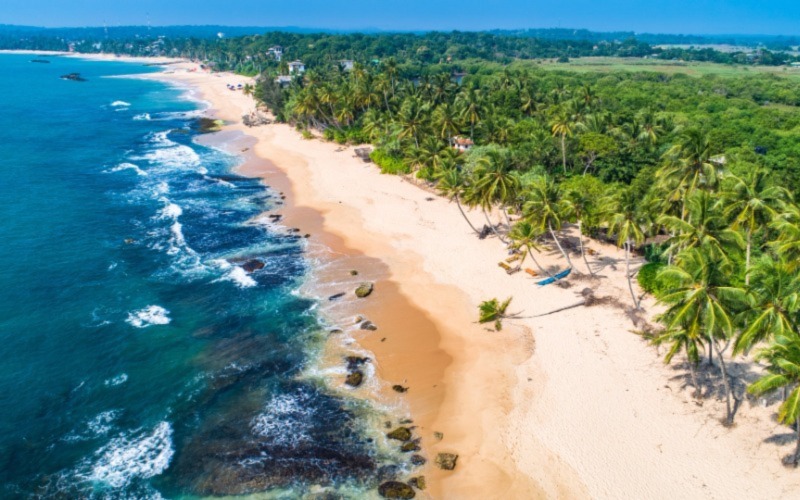
Beach view on the Coast of Sri Lanka
The southwest monsoon begins to develop at this time, resulting in intermittent thunderstorms and rain showers throughout the afternoons and evenings. In the country’s western and southern areas, including Colombo, Galle, and Hambantota, rainfall occurs more frequently. Trincomalee and Jaffna in Sri Lanka’s east and north, on the other hand, are often dry at this time of year.
It is the perfect season for water sports like golfing, surfing, and diving since the sea is warm and the weather is mild. During this time, tourists frequently travel to the beaches in the country’s south and west, including Unawatuna and Bentota.
Golf in Sri Lanka during the high season

Best time to Golf in Sri Lanka
While the northeast monsoon season begins in October and lasts until January, the southwest monsoon season begins in May and lasts until September. For the majority of Sri Lanka, the months of October through March are regarded as the dry season or the high travel season.
The climate in Sri Lanka is often warm and muggy around this period. In coastal regions, the temperature ranges from 25°C to 30°C, whereas in hilly regions, it is 20°C to 25°C. Additionally, there is a lot of humidity present—between 70% and 90%. However, the daytime climate is often agreeable and cozy. There is a lot of sunlight and minimal rain at this time of year in Sri Lanka’s coastal regions. For swimming, surfing, and other water sports, the sea is quiet and ideal. This is the best time to play golf in Sri Lanka or to take a tranquil vacation because there are fewer people on the beaches.
At this time of year, Sri Lanka’s highland regions see colder temperatures and sporadic precipitation. It’s the ideal season for hiking and environment exploration because of the foggy hills and the lush vegetation. At this time of year, the tea plantations are at their most beautiful and provide a breathtaking perspective of the surroundings.
Pros & Cons of Sri Lanka High and Low Season
In Sri Lanka, the high season normally lasts from November to April and is distinguished by bright skies and little precipitation. This time of year is perfect for golfing and other outdoor activities like beach trips, hikes, and touring national parks, which is one of its main benefits. Visitors may take advantage of the spotless beaches, go diving or snorkeling in the crystal-clear seas, and see the amazing wildlife that abounds at this time of year. The hot season is also ideal for cultural touring since it allows visitors to explore historical monuments and old ruins without worrying about getting wet.
The peak season is not without its problems, though. Some areas may face water shortages as a result of a lack of precipitation, which might result in water consumption limits and possible drought conditions. Furthermore, those who are not used to such weather conditions may find it difficult to cope with the heat and dryness, which might lead to dehydration and heat-related ailments if necessary measures are not followed.
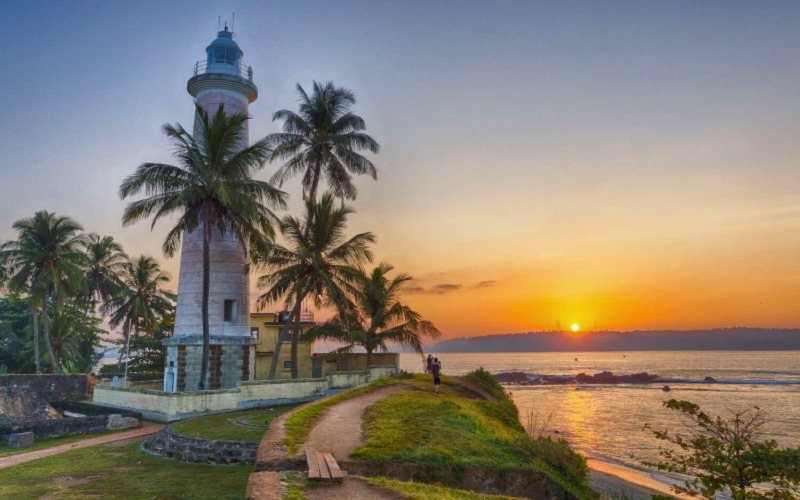
Sightseeing is perfect in Sri Lanka’s High season
On the other hand, the low season offers respite from the high season’s oppressive heat. The milder temperatures brought on by the rain make outdoor activities more enjoyable. This is especially advantageous for visitors to Sri Lanka during this season since it allows them to travel easily around the nation without feeling overheated.
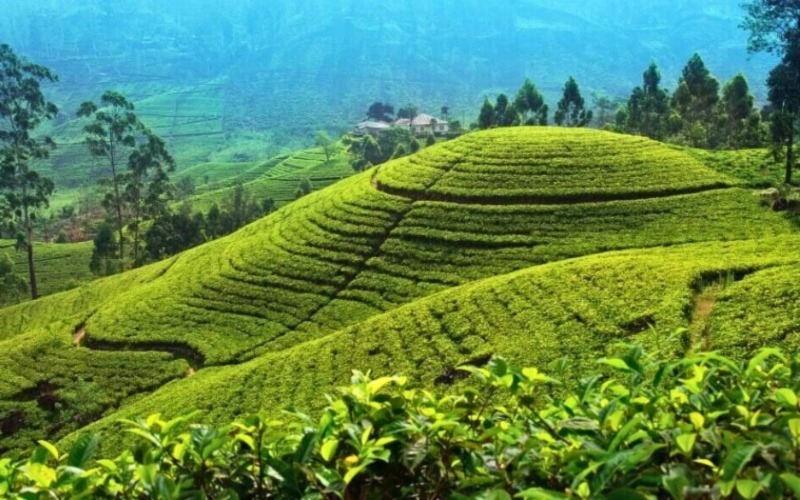
Sri Lanka’s Low season is great for nature exploring
The low season in Sri Lanka does have certain disadvantages, though. The increased danger of floods and landslides is one of the biggest negatives. A hazard to infrastructure and human life might result from rivers overflowing and unstable slopes collapsing due to excessive rains. Road closures, transportation delays, and property damage may result from this.
All year long, Sri Lanka is a golfer’s paradise. However, the dry season, which lasts from December to April, is the finest time to travel and play golf since the weather is ideal. Golfers of all skill levels may enjoy the island’s golf courses, which each offer something special. Don’t pass up the opportunity to play in one of the most beautiful places on earth. Book your golfing excursion with us right now to enjoy Sri Lanka’s beauty and challenges like never before.





